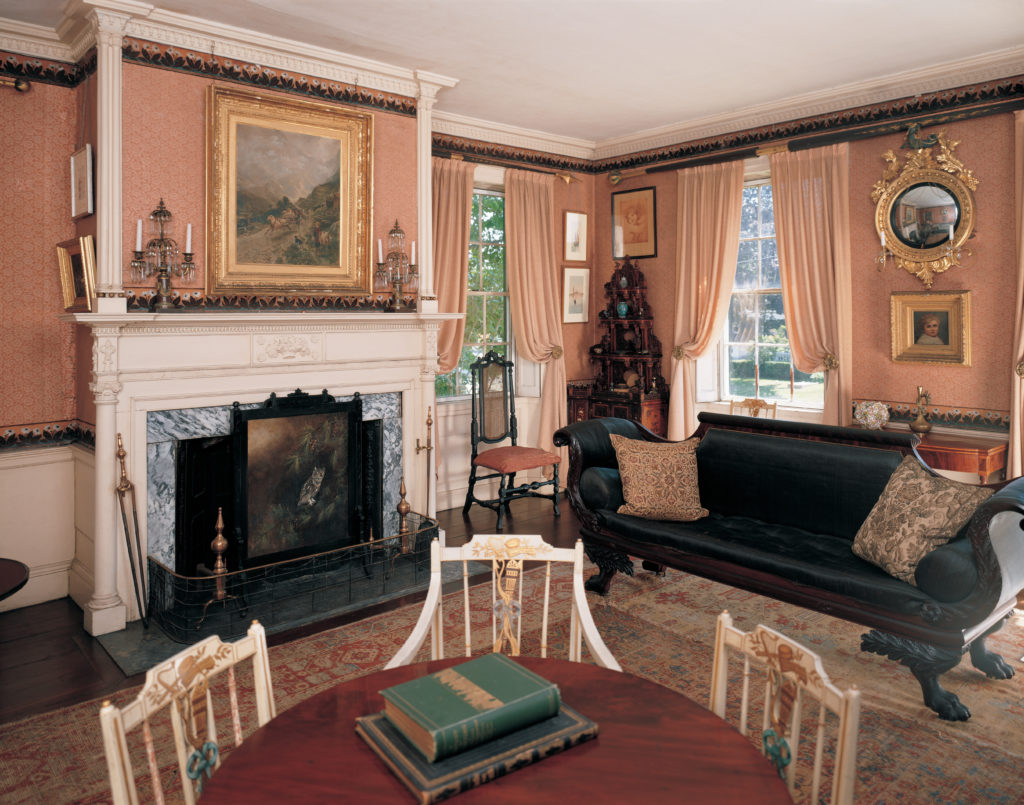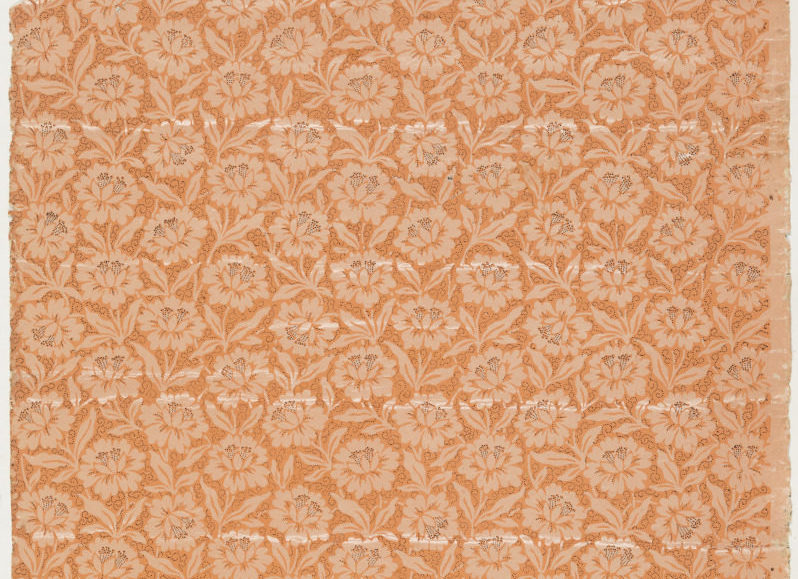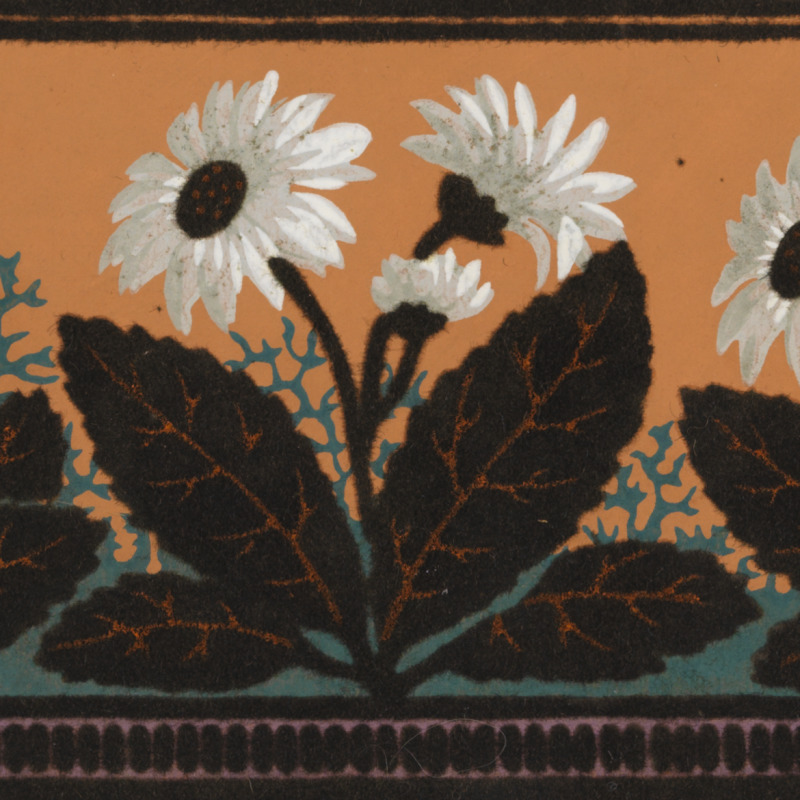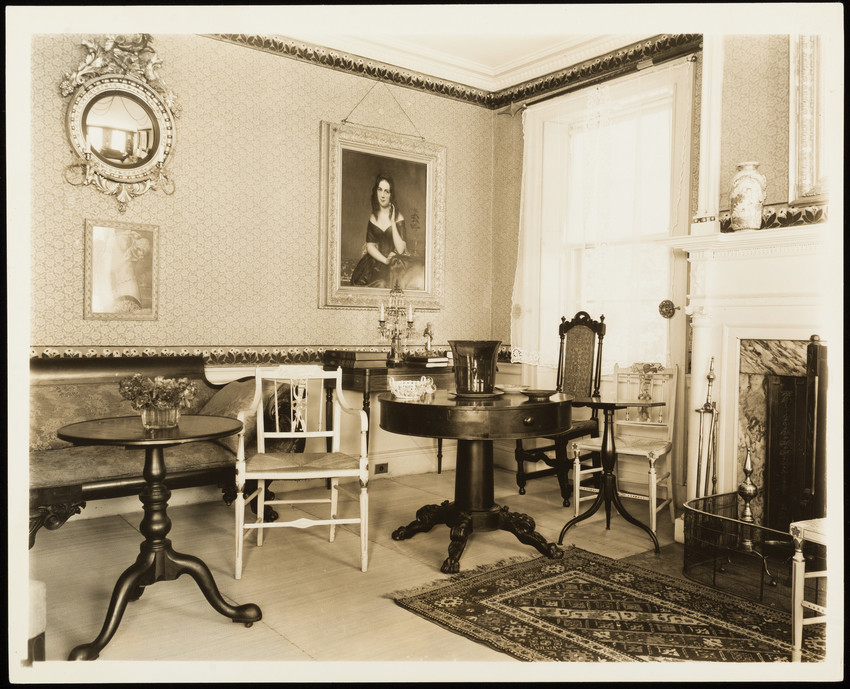 Rundlet-May House
Rundlet-May House
Parlor

The parlor is one of the first rooms a guest would have been invited into for conversation, and this is also where many of the stories of the Rundlet and May family over two hundred years can be seen. The furnishings of this room were passed down through the family and are highlighted by original Parisian flocked wallpaper, striking girandoles to illuminate the room in candelight before electricity, and two portraits of James and Jane Rundlet’s daughters; Elizabeth and Louisa Catherine.
Peach Damask Wallpaper
James Rundlet ordered seven different wallpaper patterns and complimentary borders directly from London to decorate his new home on September 3, 1807, while the construction of his house was being completed. Rundlet kept detailed accounts of the building expenses for his impressive three-story house, as can be seen by the invoice below. Of the total construction cost of $12,604.47, approximately $283 was spent on 112 rolls of wallpaper. The paper and border identified as “Peach Damask” and “Paris Flock Border” on the shipping invoice were hung in the best parlor when Henry Bufford was paid for “painting and papering the parlor” in September 1809 and remain on the walls today.

The flocked border of the parlor wallpaper, an unused sample of it found in the attic of Rundlet-May house is now in the Historic New England collection, and shows a festive tactile approach to the leaves on the floral motif.

Wallpapers: Fashion Forward

Historic New England’s wallpaper collection consists of over 6,000 individual samples of wallpaper, historic photographs of wallpaper in situ, and ephemera dealing with the wallpaper industry. The wallpaper at Rundlet-May House is a byproduct of James Rundlet’s business dealings with ships bringing in trade items, his keen interest in textiles for selling, and furnishing the Rundlet family home with the finest furnishings. Imported wallpapers held particular importance in the American market for the first several decades of the nineteenth-century.